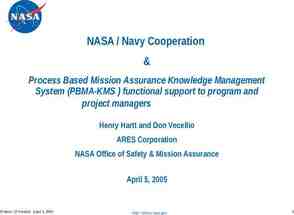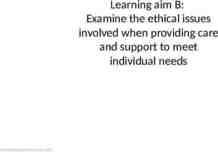As you arrive, please respond to a quick poll about your context An
31 Slides3.80 MB
As you arrive, please respond to a quick poll about your context An Instructional-Workforce Framework for Coordinated Change in Undergraduate Education PollEv.com /cvh Change: The Magazine of Higher Learning Volume 55, 2023 - Issue 1 Mark Lee, Spelman College Cassandra Volpe Horii, Stanford University With input from co-authors Ann E. Austin (Michigan State), Leanne Avery (SUNY Oneonta), Marielena DeSanctis (Community College of Denver), Noah Finkelstein (University of Colorado), Emily Miller (AAU) and Barbara Schaal (Wash U. St. Louis) Skip “Register” Press “FINISH” after Q2 ASCN Webinar January 2024
Goals: Analyze characteristics of your educational context using the instructional workforce framework. Collaboratively map new possibilities for organizational change and action using the framework. Leave with systemic strategies toward Justice, Diversity, Equity, and Inclusion, for Aligning Incentives, for and with educators. All session materials: tinyurl.com/IW24ASCN 2
Responses 3
All session materials: tinyurl.com/IW24ASCN Positionality and Framing Facilitators Mark Lee and Cassandra Volpe Horii Co-authors Ann Austin (Michigan State), Leanne Avery (SUNY Oneonta), Marielena DeSanctis (Community College of Denver), Noah Finkelstein (University of Colorado), Emily Miller (AAU, and Barbara Schaal (Wash U. St. Louis) National Academies of Science, Engineering & Medicine ASCN Webinar January 2024 4
Part 1: Instructional Workforce Framework: Overview & Applications Part 2: Case Discussions Breakout groups Q&A/Wrap Up All session materials: 5 tinyurl.com/IW24ASCN
Part 1: Instructional Workforce Framework Equitable and Sustained Change in STEM Education (and more broadly): Requires effective, inclusive, evidencebased teaching to achieve the goals of improved outcomes for all students. All session materials: 6 tinyurl.com/IW24ASCN
Why improve teaching? Improve Teaching Increase Student Learning Increase Inclusion & Belonging Improve Equity of Student Outcomes
Reframing Workforce Developme nt “Postsecondary workforce development is one of the major innovations of the modern community college.” “Investing in the instructional workforce is a wise strategic action.” Jacobs & Worth 2019 Lee et al. 2023 Preparing students to enter and succeed in the workforce Supporting faculty to prepare students
Members of the Instructional Workforce VITAL and Tenure-Line Faculty Visitor Assistant Instructor Associate Teaching Prof., Full TA Professor Adjunct Lecturer VITAL acronym coined by R. Levy, 2019 Contingent faculty: 70% of the instructional workforce across higher education. At present, tend to represent more diverse backgrounds.
Instructional Workforce Framework for Coordinated Change in Undergraduate Education Three Essential & Interconnected Levers 1. GOVERNANCE related to instruction 2. Opportunities for PROFESSIONAL DEVELOPMENT 3. Appropriate EVALUATION AND REWARD SYSTEMS 10
The Higher Education Instructional Workforce is Central Governance Evaluation of Teaching Professional Developme nt Instructional Workforce Improve Teaching Increase Student Learning Increase Inclusion & Belonging Improve Equity of Student Outcomes
Professional Development Individual and group programs that support instructional workforce in acquiring, practicing, and advancing skills and mindsets related to teaching.
PollEv.com /cvh Your context a strategy related to PROFESSIONAL DEVELOPMENT that could support VITAL faculty in more equitable and just ways. E.g. - “Large public comprehensive: school-based PD planning committees that include all forms of VITAL faculty.” Professional Development Individual and group programs that support instructional workforce in acquiring, practicing, and advancing skills and mindsets related to teaching.
Responses: Medium/large, public, R1. Training on how to interpret and incorporate student feedback, and transparency on the impact of that feedback. Public-HBCU: developing a system to align desired PD to areas of need in teaching. Small private PWI: VITAL faculty should be given similar professional development funds as tenure-stream faculty and the same number or fewer administrative hurdles to access them Medium/large, public, research-focused (R1). Copying the idea of having compensation for attending workshops. Rewards are important when development isn't part of the job description. Medium sized institution, PWI: connect to merit pay, acknowledged by leadership Community college - currently there is a faculty-led professional development program. Faculty are nominated for this position. While this is fine, it seems that some outside PD would be beneficial as the faculty may not have been professionally trained or may have just read a book to teach a course. Large, public, teaching and research-focused institution: Offering evening and weekend PD opportunities or self-paced online modules to provide greater access for VITAL faculty. Large research univ— in recent years we have ensured that pad is open to all instructors across apptmt types If we had a functional Center for teaching.After the pandemic and loss of several faculty and positions, there has been very little prof dev of any kind on our campus large public university- teaching development plans for departmetns and individuals R1 PWI: holistic, rewarded, required / incentivized, and built into the hiring and continuation processes. Working across all layers of educational practice Medium, private, selective university: paid professional development day(s) before academic terms begin. 14
Governance Decision making structures for policies, priorities, resources, and risk Institution & department levels Shapes instructional roles and communicates with instructional workforce members Who participates
PollEv.com /cvh Governance Decision making structures for policies, priorities, resources, and risk Institution & department levels Your context a strategy related to GOVERNANCE that could support VITAL faculty in more equitable and just ways. Shapes instructional roles and communicates with instructional workforce members Who participates
Responses: deliberate vagueness- make dept policies on evals visible, incl for teaching evals , opps for input community college - administration needs to be better aligned with helping faculty and discussing teaching issues with faculty by staying current. Faculty need to work with instructional designers. Sharing workload instead of being wholly owned by faculty. Large research univ: Making sure dept bylaws include clear statements that all fac across apptmt types can vote on matters relevant to them Union, shared governance, limited opportunity for non-tenure track VITAL instructional workforce to participate on this level. Small private PWI: seeking input from VITAL faculty about what and when they will teach and curricular structure R1 PWI: shared (?!!?), inclusive (with PD for folks about governance), rewarded (given time and acknowledgement), and impactful. Public-HBCU: Faculty and student design instructional evaluation tool. Large, public, R1. VITAL faculty given some mechanism for shared governance. 17
Evaluation & Reward Systems Encourage, assess, and recognize effective teaching Provide methods and timelines for feedback and professional advancement. Whose teaching is evaluated, how, and what rewards
PollEv.com /cvh Evaluation & Reward Systems Encourage, assess, and recognize effective teaching Your context a strategy related to EVALUATION & REWARD SYSTEMS Provide methods and timelines for feedback and professional advancement. Whose teaching is evaluated, how, and what rewards
Responses: Large, public, teaching and research focused institution: Recognition for contributions that reduce or eliminate gaps in performance between majority and minority students. Mixture of undergraduate and graduate programs - recognition of full-time and part-time instructors for 'teaching' award, have it be based on professional teaching behaviors. Follow up - way to support - pairing or teams to share assets across instructors to learn together. Small private PWI: create teaching awards and evaluation processes specific to VITAL faculty Medium, public, HSI. More accountability on teaching, not just from student evals. We need more sources of evidence. large public research university: actually have standards & processes for evaluating non-tenure track instruction workforce Large research univ: Asking all faculty to include examples in their annual review portfolio of how they contribute to institutional goals to advance equity and inclusion. R1 PWI: a developmental, transparent, equitable (across all layers / actors), engaged (inclusive of those teaching), and linking teaching/education across all facets of faculty work . perhaps allowing those working to participate in the design of what/ how they are evaluated Small regional state public institution: teaching is evaluated for all instructors by student evals. However, only tenure-track faculty are observed and chairs are not allowed to view any other results/faculty nor evaluate - must be invited to join the class to observe. Large, R1, public. Create new student feedback system, move away from "Student Evaluations". Then, create policy for incorporating VITAL and Tenure stream instructor response to feedback. post tenure review university wide recognition awards 20
Part 2: Case Studies All session materials: 21 tinyurl.com/IW24ASCN
Case 1: Regional Comprehensive University reforming introductory STEM courses STEM courses will include more structure and active learning. Their plan involves team teaching with tenure-line faculty, lecturers, and TAs. Using the Framework, department chairs realize that lecturer and TA appointments do not include time for the professional development needed to learn and practice the new methods, and that lecturers may be disincentivized by the fear of poor course surveys, since their evaluation and reappointment are tied closely to the surveys. The chairs, leveraging their department governance roles, convene a working group with lecturers and TAs, along with tenure-line faculty, to make recommendations about professional development, collaboration practices for teaching teams, and policies for use of student survey results along with other evidence of teaching effectiveness in reformed classes. https://www.hcmworks.com/blog/different-types-of-diversity-in-the-workplace-and-how-to-leverage-them 22
Case 2: Community College has challenges hiring part-time instructors from local candidates A CC that relies on working professionals as part-time instructors in programs whose graduates form the workforce in a key regional economic sector is having trouble hiring enough instructors. Using the Framework, institutional leaders engage the faculty governance body in study of part-time instructors in the region, to determine barriers and rewards at play in the shortage. The joint study yields insights about class formats, times, and locations conducive to part-time instructors and still accessible to students, as well as needs for professional development and support for pedagogy that best leverages the instructors’ industry expertise. The governance body includes several part-time instructors on their official roster of faculty representatives. https://ed.stanford.edu/news/explaining-role-community-colleges 23
Case 3: Funding organization contemplates the value of IRACDA program Institutional Research and Academic Career Development Awards (IRACDAs), which build teaching-related professional development into postdoctoral fellowships through training and teaching experience, involving undergraduate institutions partnering with research institutions. Using Framework to examine each lever, as professional development, IRACDAs ensure early-career teaching development. In terms of governance, IRACDAs rarely involve any governance proceedings. https://med.emory.edu/education/postdoctoral-training/first/index.html Importantly, the Framework highlights the need to ensure that the work of the faculty who mentor IRACDA postdocs is included in evaluation and reward structures, to incentivize and ensure quality of mentorship. The funding organization decides to prioritize IRACDAs but make important changes in their design based on use of the Framework. 24
Governance Decision making structures for policies, priorities, resources, and risk; shapes instructional roles and communicates with instructional workforce members. Who participates and how are they prepared? Professional Development Individual/group programs that support instructional workforce in acquiring, practicing, and advancing skills and mindsets related to teaching. Who is supported, when, and how? Conceptual and graphic design: Starlette M. Sharp Evaluation & Reward Systems Encourage, assess, and recognize effective teaching; provide methods and timelines for feedback and professional advancement. Whose teaching is evaluated, how, and what rewards are associated?
Applying the Instructional Framework to Case Studies Google Docs for each case, including case and prompts: tinyurl.com/IW24ASCN Cases How does the framework support change in each case study? 1. Name the VITAL or Tenure-line instructional workforce roles involved. 2. What are the opportunities and gaps for each role to engage in professional development and governance in this case? 3. How are educational contributions evaluated and recognized in the faculty rewards systems in this case? If a course of action is proposed in the case, what other options can you think of?
Report Outs: Case 1: Regional Comprehensive University reforming introductory STEM courses Case 2: Community College has challenges hiring part-time instructors from local candidates Case 3: Funding organization contemplates the value of IRACDA program Conceptual and graphic design: Starlette M. Sharp
Wrap Up: Additional thoughts & questions What kinds of important cases were not discussed here? All session materials: tinyurl.com/IW24ASCN 28
An Instructional-Workforce Framework for Coordinated Change in Undergraduate Education All session materials: tinyurl.com/IW24ASCN Change: The Magazine of Higher Learning Volume 55, 2023 - Issue 1 Mark Lee, Spelman College Cassandra Volpe Horii, Stanford University With input from co-authors Ann E. Austin (Michigan State), Leanne Avery (SUNY Oneonta), Marielena DeSanctis (Community College of Denver), Noah Finkelstein (University of Colorado), Emily Miller (AAU) and Barbara Schaal (Wash U. St. Louis) Thank you! ASCN Webinar January 2024
Governance Which members of the instructional workforce participate and which are excluded? Consider the roles, demographics, disabilities, and identities of participants. Do policies and resources established by governance (e.g., funding, time) support participation in and access to professional development for prospective and current members of the instructional workforce, across career stages and roles (VITAL and tenure-line)? Do policies provide security, a living wage, and pathways for professional advancement to VITAL and tenureline faculty? How do governance bodies communicate about policies with the instructional workforce, including seeking input and sharing decisions? How do governance decisions prioritize resources for and status of teaching, within the context of the institution’s mission and goals? Professional Development Evaluation & Reward Systems How are tenure-line and VITAL faculty supported, in the form of workload allocation, paid time, and resources, to participate in teaching-related professional development? Do criteria for evaluation align with institutional and departmental goals for inclusive, equitable, and effective undergraduate teaching? Are the teaching-related skills and mindsets addressed in professional development aligned with hiring, evaluation, and reward structures? Are evaluation practices clear and free from bias, with multiple sources of evidence related to teaching effectiveness? Are members of the instructional workforce encouraged and rewarded by departments and institutions for their engagement in professional development, at the institution and through disciplinary organizations? Do evaluation structures provide opportunities for both formative and summative feedback and evaluation? Are professional development opportunities flexible and accessible; do they address the needs of prospective and current members of the instructional workforce, across the full span of careers and roles (VITAL and tenureline)? Are campus-based professional development offices adequately staffed and resourced to meet the needs of VITAL and tenure-line faculty? Do professional development programs regularly change to incorporate new insights about effective and inclusive teaching practices, as well as more effective professional development methods, from educational research? Do professional development programs Is achievement of criteria in the evaluation and reward structures linked to pathways for career progress, for both VITAL and tenure-line faculty? Are instructional faculty evaluated and rewarded for participation in governance structures and engaging in professional development opportunities? Do the evaluation and reward structure and criteria inform instructional workforce preparation and professional development, as well as educational practice? In what ways do evaluation practices need to change to address instructional workforce needs and increase justice, equity, diversity, and inclusion for STEM instructors and students?
References Culver, KC, & Kezar, A. (2021). Designing accessible and inclusive professional development for NTTF. Los Angeles, CA: University of Southern California, Pullias Center for Higher Education. https://pullias.usc.edu/download/designing-accessible-and-inclusive-professional-development-for-nttf. Friedensen, R. E., Horii, C. V., Kimball, E., Lisi, B., Miller, R. A., Siddiqui, S., Thoma, H., Weaver, J. E., & Woodman, A. (2021). A systematic review of research on faculty with disabilities. Journal of the Professoriate 12 (2): 2-25. https://caarpweb.org/jotp-fall-2021/. Handlesman, J., Elgin, S., Estrada, M., Hays, S., Johnson, T., Miller, S., Mingo, V., Shaffer, C., & Williams, J. (2022). Achieving STEM diversity: Fix the classrooms. Science 376(6597): 1057-1059. https://doi.org/10.1126/science.abn9515. Jacobs, R. L. & Hawley, J. D. (2009). The Emergence of ‘Workforce Development’: Definition, Conceptual Boundaries and Implications. In: Maclean, R. & Wilson, D. (Eds). International Handbook of Education for the Changing World of Work. Dordrecht: Springer. https://doi.org/10.1007/978-1-4020-5281-1 167. Kezar, A. & Maxey, D. (Eds). (2016). Envisioning the Faculty for the 21st Century. New Brunswick, NJ: Rutgers University Press. Kezar, A., Gehrke, S., & Bernstein-Sierra, S. (2018). Communities of transformation: Creating changes to deeply entrenched issues. The Journal of Higher Education, 89(6), 832-864. Levy, R. (2019). VITAL Faculty: A Growing workforce in Colleges and Universities. Blog: Mathematical Association of America. https://www.mathvalues.org/masterblog/vital-faculty. Grunwald Associates (2022). Undergraduate STEM Education: Key Insights from Select NASEM Publications. https://www.nationalacademies.org/event/05-23-2022/roundtable-on-systemic-change-in-undergraduate-stem-education-spring-hybrid-meeting. NASEM (2020). Recognizing and Evaluating Science Teaching in Higher Education Proceedings of a Workshop—in Brief. Washington, DC: The National Academies Press. https://doi.org/10.17226/25685. National Center for Education Statistics. (2022). Characteristics of Postsecondary Faculty. Condition of Education. U.S. Department of Education, Institute of Education Sciences. https://nces.ed.gov/programs/coe/indicator/csc. World Bank. SABER Project: https://www.worldbank.org/en/topic/education/brief/systems-approach-for-better-education-results-saber.




































